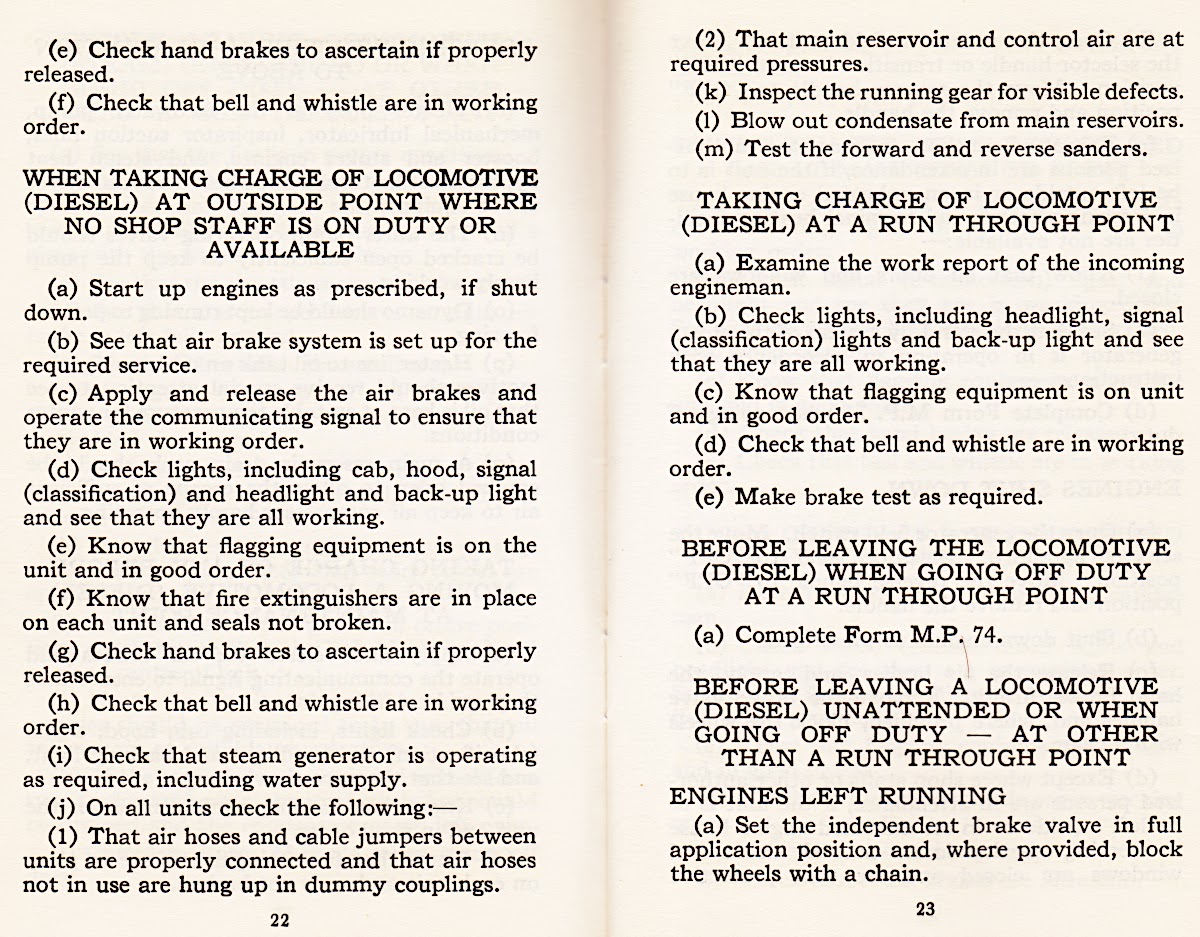Don't leave diesels standing over hot ashpits ... and other good advice. At the point when the Canadian Pacific Railway still rostered everything from steam locomotives and wooden coaches, to the stainless steel Canadian equipment and Dayliners with oscillating headlights, this booklet covers a wide diversity of operating situations.
 |
| from: Engine Houses & Turntables on Canadian Railways 1850-1950; Edward Forbes Bush; 1990; Boston Mills Press. |
Above: CPR MacTier, Ontario, roundhouse built circa 1905. The photo is undated.
Paragraph (k), above: Do not leave your nice new diesel with all of its copper-wound traction motors sitting over the hot ashpit of coals in the foreground. It belongs on the Ready Track ... somewhere on the right.
 |
| from: Locomotive Breakdowns & Appliances; Cavey & Harding; 1931; International Textbook Press. |
A water glass and three try cocks can be seen above. The water glass alone cannot be trusted to show the true level of water in the boiler. So three try cocks are also tapped in as a backup.
But ... the three try cocks cannot always be trusted to show the true level of water in the boiler.
Above, the engine is working hard. Boiler geometry and the turbulence of the boiling water is causing the water at the boiler backhead to be deeper. The second try cock would give a false indication that there was enough water in the boiler. However, NONE is showing in the water glass - which is engineered to show the average depth of boiler water in most circumstances. (On another illustration, water glass water is shown with black colouring.)
Notice that the forward part of the boiler crown sheet is uncovered.
A similar crown sheet uncovering problem could occur, for example, if the engine was climbing a hill.
If this situation is not corrected promptly, the crown sheet metal will be weakened by this over-temperature 'burning' which will require a costly repair and negative Brownie Points will be registered on the engine crewmen's records.
... Or the crown sheet metal will fail completely in a catastrophic boiler explosion. The crew won't have to worry about discipline. All of their worries will be over.
The engineer and fireman each had their own set of boiler-water-level instruments to watch. A full boiler showing high stream pressure was what the engineer wanting to see just before racing away from a station stop with a heavy passenger train ... or hauling a freight train up a grade.
Notice that a water glass can be changed quickly after 'cutting it out' using the gauge cocks. Engine crews carried spare water glasses with them in case a water glass broke en route.
 |
| from: From Abbey to Zorra via Bagdad; Dale Wilson; 1980; Nickel Belt Rails. |
The Second Section of Train 22 from Chicago, Detroit and Toronto
passes two trains of commuter equipment at Vaudreuil, Quebec, in May 1958.


















